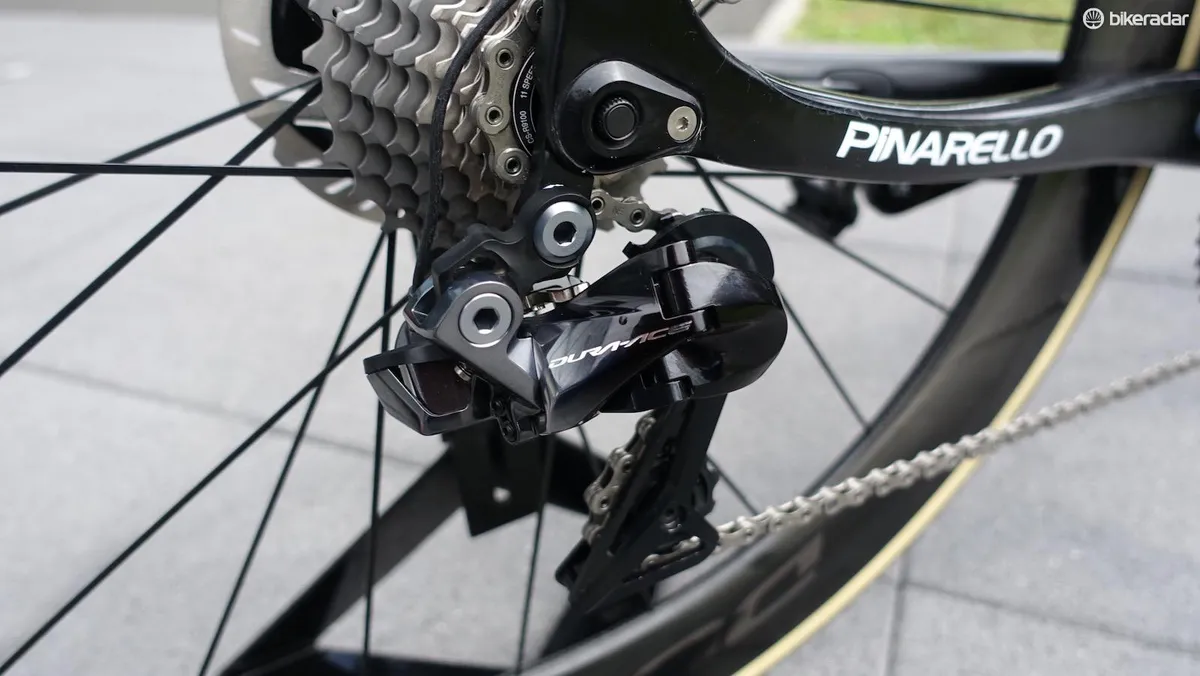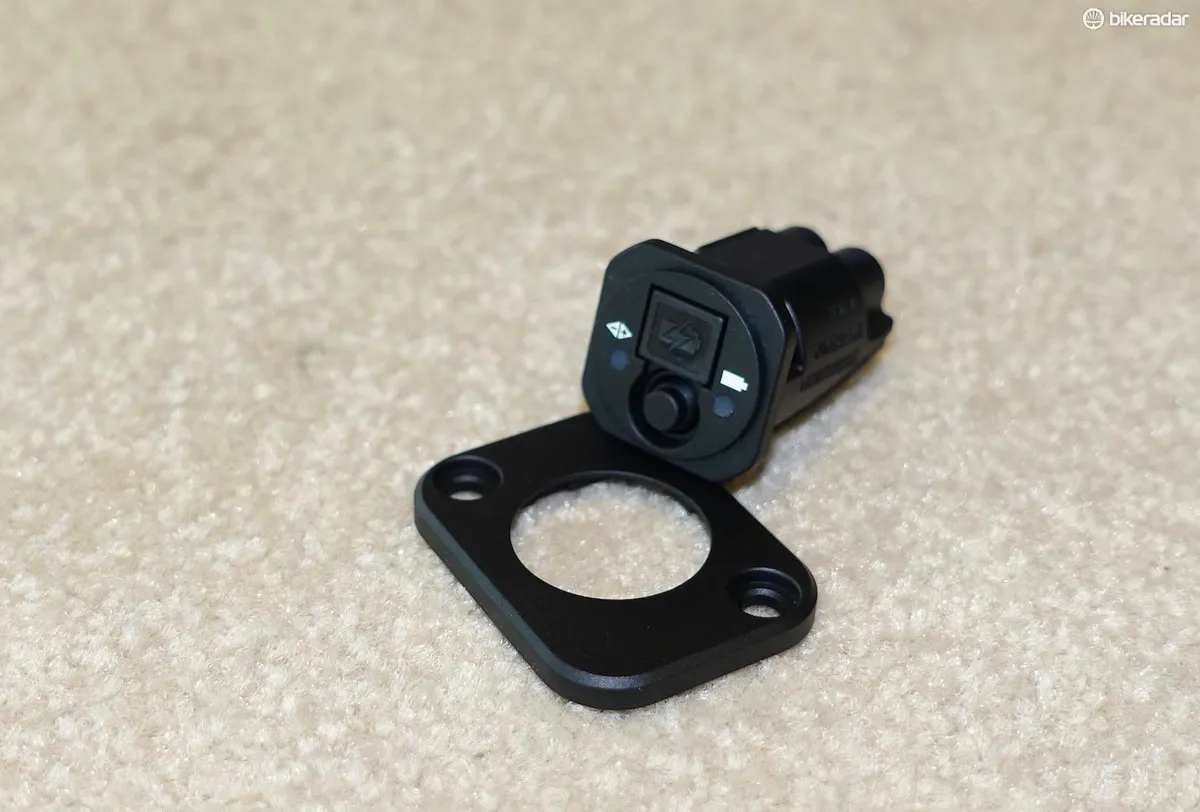The new Dura-Ace groupset exploded into the world this week with a slew of technical details, many of which were clouded by the smoke of Shimano’s inscrutable alpha-numeric coding. EW-WU111, anyone? Let me break down what’s cool about the new four-tiered group in basic English.
- Shimano Dura-Ace R9100 first ride review
- Shimano Dura-Ace R9100 and R9150 Di2 groupsets: all you need to know
- Shimano Dura-Ace vs SRAM Red: groupsets compared
New Shimano Dura-Ace groupsets, explained
First, a quick primer:
- 9100 is mechanical Dura-Ace with rim brakes
- 9120 is mechanical Dura-Ace with hydraulic brakes
- 9150 is Di2 Dura-Ace with rim brakes
- 9170 is Di2 Dura-Ace with hydraulic brakes
1. Better brakes for Shimano Dura-Ace
Shimano launched a Di2 system with hydraulic brakes in 2013, but refused to peg it as Dura-Ace, saying the pieces weren’t yet refined enough to achieve the top-level moniker. (Contrast that with SRAM, which hit the ground running with Red HydroR.) Now, for 2017, Shimano has a level of hydraulic calipers, levers and rotors worthy of the Dura-Ace designation.
P.S. Those black-interior rotors look bitching.
P.P.S. If you still like rim brakes (I do), then the new 9100 calipers come with claims of boosted stiffness over the already class-leading 9000 models.

2. Better buttons for Shimano Dura-Ace
Although the current Di2 will never miss a shift, riders may sometimes miss whether or not they actually pressed a shift button, especially when riding in a very cold, noisy or rattling environment.
The new 9150 and 9170 Di2 levers seem to have solved this problem with more surface area, more tactile feedback and a louder click on the buttons.
3. Hidden junction box options for Shimano Dura-Ace
One of my main gripes about current Di2 is how the junction box configuration clutters the cockpit of far too many otherwise beautiful bikes. A fat rubber band wrapped around the stem? That’s the best we can do? (On my bike I zip-tie the box to the bottom of Bar Fly mount, which isn’t a whole lot better.)
The new junction box (that’s the EW-WU111, for those of you reading the technical manual) can be stuck in the down tube of frame makers who play along, but the bar-end handlebar plug configuration is the one that raised my eyebrows. Tidy and accessible for charging and tuning. Yes, please.

4. Wireless connectivity for Shimano Dura-Ace
For the record, Di2 is still wired. The battery, junction box and derailleurs are all physically tied together. This can cause brain damage during initial installation, but is otherwise a non-issue.
However, there are wiry annoyances with this current Di2 system, namely required plug-in to a PC (sorry, Mac users) to program or update the system, and the requirement of a D-Fly component to transmit system info on ANT to a Garmin.
Lo and behold, the new Di2 takes two wireless jumps forward:
- You can now program and update the system via Bluetooth on a smartphone or tablet (hello, iPhone users)
- The junction box now talk wirelessly to your Garmin (catching Shimano back up with SRAM’s current Red eTap)

5. Synchronized and/or customized shifting for Shimano Dura-Ace
Two Di2 buttons are now all you’ll require to scale the full range of 22 gears, thanks to programmable synchronized shifting. Formerly known as Synchro Shift, it’s a feature that first appeared in the company’s XTR Di2 electronic mountain bike transmission, where it offers the ease of use of a 1x system with a range of up to 33 gears.
Instead of having to think about when to shift the front chain ring and how to adjust the rear, you just press easier or harder, and Di2 does the math and the shifting for you.
If this seems like handing over too much control to the machine, there is also a Semi Synchronized option, where the rear will adjust slightly to minimize gear-ratio jumps when you shift the front derailleur. (Most riders automatically shift one or two gears at the rear when shifting at the front.)
A third option (also available on current Di2) is the ability to configure buttons however you like. For instance, you could set both right-hand buttons to shift the rear derailleur outboard and both left-hand buttons to shift the rear derailleur inboard, à la eTap — then use a climber satellite shifter to control the front derailleur.
As before, you can set the shift speed to your choice of one of five options, and the front derailleur will auto-trim to match your rear derailleur position.
6. Power measurement for Shimano Dura-Ace
After SRAM beat Shimano to the punch by, well, years with its Quarq power meters, Shimano has finally got into the game for 2017 with the FC-R9100-P. Rolls right off the tongue, doesn’t it? But what the meter lacks in linguistic elegance it makes up for in minimalist aesthetics and, hopefully, Dura-Ace-level performance.
Accurate left/right measurement in an allegedly waterproof, ANT+/Bluetooth design that recharges with a magnetic cord could be a gamechanger.
Other features of interest
There are other new features of the system I’ll have to play with before I can give a thumbs up or down. For instance, the new Shadow rear derailleur looks cool, taking another page out of Shimano’s MTB book to bring the rear mech closer to the cassette and bit further out of harm’s (and aero drag’s) way.
But frankly, current Di2 shifting is so good I couldn’t articulate how the rear shifting could be better. And the new 11-30 cassette sounds good, but I am happy with my current 11-28 on my hacked 53/36 Dura-Ace crank.
In the meantime, check out Nick Legan’s First Ride review of the new mechanical Shimano Dura-Ace 9100 group.

